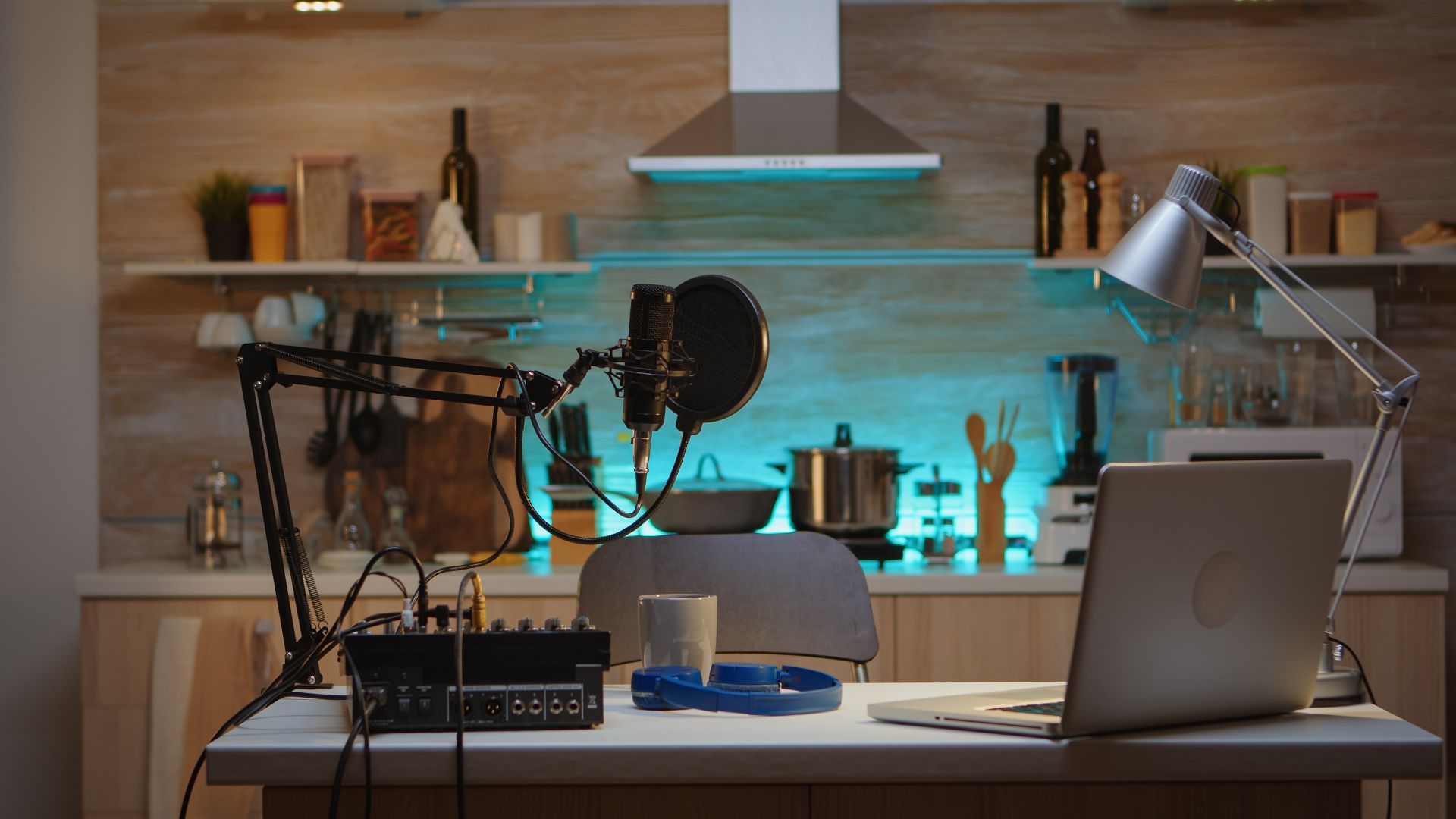Are you a storyteller, a knowledge enthusiast, or someone with a burning desire to share your thoughts and ideas with the world? If so, you’ve come to the right place. In the fast-paced digital age, podcasting has emerged as a powerful platform for expressing your voice and connecting with a global audience. Look no further, you can start right from the comfort of your own home.
Imagine having a dedicated space that’s entirely yours, filled with the equipment and technology to produce professional-sounding episodes. A home podcast studio is your ticket to podcasting success.
In this blog, we’ll guide you on how to have your own recording space, set up a podcast studio within the four walls of your home. We’ll explore practical tips, podcast equipment recommendations, and creative ideas to transform any space into a haven for sharing your voice.
Let’s get started!

A Home Podcast Studio?
Gone are the days of relying on external recording studios or seeking out rented spaces. Now, you have the freedom to create a home recording space that reflects your unique personality and meets your podcasting needs. Whether it’s a spare room, a cozy corner, or even a walk-in closet, your home holds the potential to become a sanctuary for your storytelling endeavors.
A home podcast studio is a setup within your house, a room designed specifically for you to record, edit, and produce your podcast episodes with high audio quality. It allows you to have a professional space for podcasting without renting a separate studio or workspace.
A home podcast studio can be as simple or elaborate as you want, depending on your budget, available space, and desired level of production quality.
Hiring a studio
If you prefer not to set up a podcast studio at home or don’t have the necessary resources, another option is to hire a professional podcast studio. I used to find a podcast studio near me when there was some construction near my room and it was really annoying.
Just make sure to plan ahead, communicate your requirements clearly, and clarify any doubts or concerns before finalizing your booking.
Why Do You Need A Podcast Studio?
So, why do you need a professional podcast studio? Let’s explore the transformative power it holds and the opportunities it brings.
Professionalism and Sound Quality
A podcast studio provides an environment optimized for recording, ensuring top-notch audio quality. With acoustic treatment and soundproofing, you can minimize unwanted external noise, like background noise, echoes, or fluctuations in ambient lighting.
If you frequently host guests on your podcast, a dedicated studio makes a big difference in their experience. With proper sound treatment and quality equipment, remote guests can enjoy clear audio and seamless interactions, fostering a more engaging conversation.
Focus and Creativity
A podcast studio serves as the hub for your post-production activities. With a well-equipped workstation, you can edit your recordings, fine-tune audio levels, add professional touches like music intros or outros. The controlled environment of your studio facilitates precise editing and mastering, resulting in a polished final product that reflects your commitment to quality.
Branding and Identity
A podcast studio provides a physical space that aligns with your podcast’s branding and identity. It becomes a visual representation of your podcast show, allowing you to create a unique atmosphere that resonates with your audience. From the artwork on the walls to personalized setups, your studio helps reinforce your brand and build a loyal community.
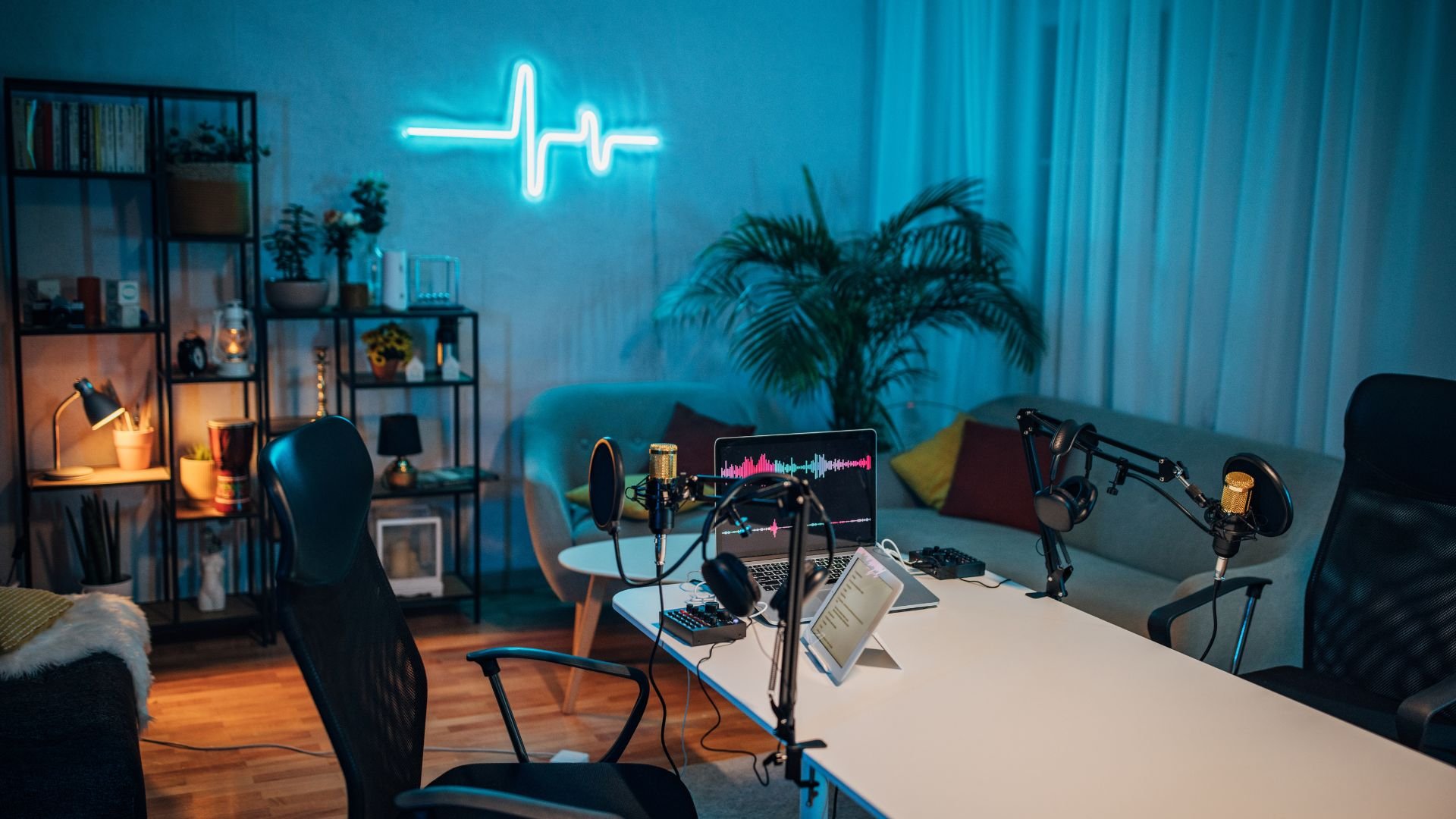
How To Set Up Your Home Podcast Studio?
Now we know the importance of a professional podcast recording studio, let’s discover some steps to make your dream recording studio come true.
Find a suitable space
Finding the right place for your home podcast studio involves a balance between practicality, sound quality, and comfort. Take the time to evaluate different spaces, experiment with test recordings, and make adjustments as necessary.
Here are some tips to help you choose the perfect space:
Choose a Dedicated Space: Look for a dedicated area in your home that can be solely used for podcasting. This could be a spare room, a quiet corner, or even a walk-in closet. Avoid setting up your podcast recording studio in high-traffic areas or rooms with excessive ambient noise.
Assess Background Noise: Listen carefully for any background noise in the potential recording space. Avoid rooms near noisy appliances like refrigerators, air conditioners, or washing machines.
Flexibility and Expansion: Consider the potential for future growth and expansion of your podcast studio. If you anticipate having guests or needing additional equipment, choose a space that can accommodate these needs without compromising sound quality or comfort.
Soundproofing and Acoustic Treatment
These are two essential elements for creating a professional podcasting space in your home. They help minimize external noise and control the sound reflections within the room, resulting in high-quality audio recordings.
Soundproofing
Involves reducing the amount of sound that enters or leaves your studio. To achieve this, consider the following options:
- Insulate walls: Install additional insulation materials like soundproof drywall, mass-loaded vinyl, or acoustic foam panels on the walls to reduce sound transmission.
- Solid doors: Replace hollow doors with solid core doors, which provide better sound isolation.
- Double-glazed windows: If you have windows in your studio, consider installing double-glazed windows to minimize outside noise.
Acoustic Treatment
Focuses on controlling the sound reflections within the room to reduce excessive reverb and echo. Here are some techniques to consider:
- Foam acoustic tiles: Install foam acoustic panels or tiles on the walls to absorb and scatter sound waves, reducing reverb.
- Diffusers: Use diffuser panels to break up and disperse sound reflections, creating a more balanced acoustic environment.
- Carpeting and curtains: Soft and furnished surfaces like carpeting and curtains help absorb sound and reduce reflections.
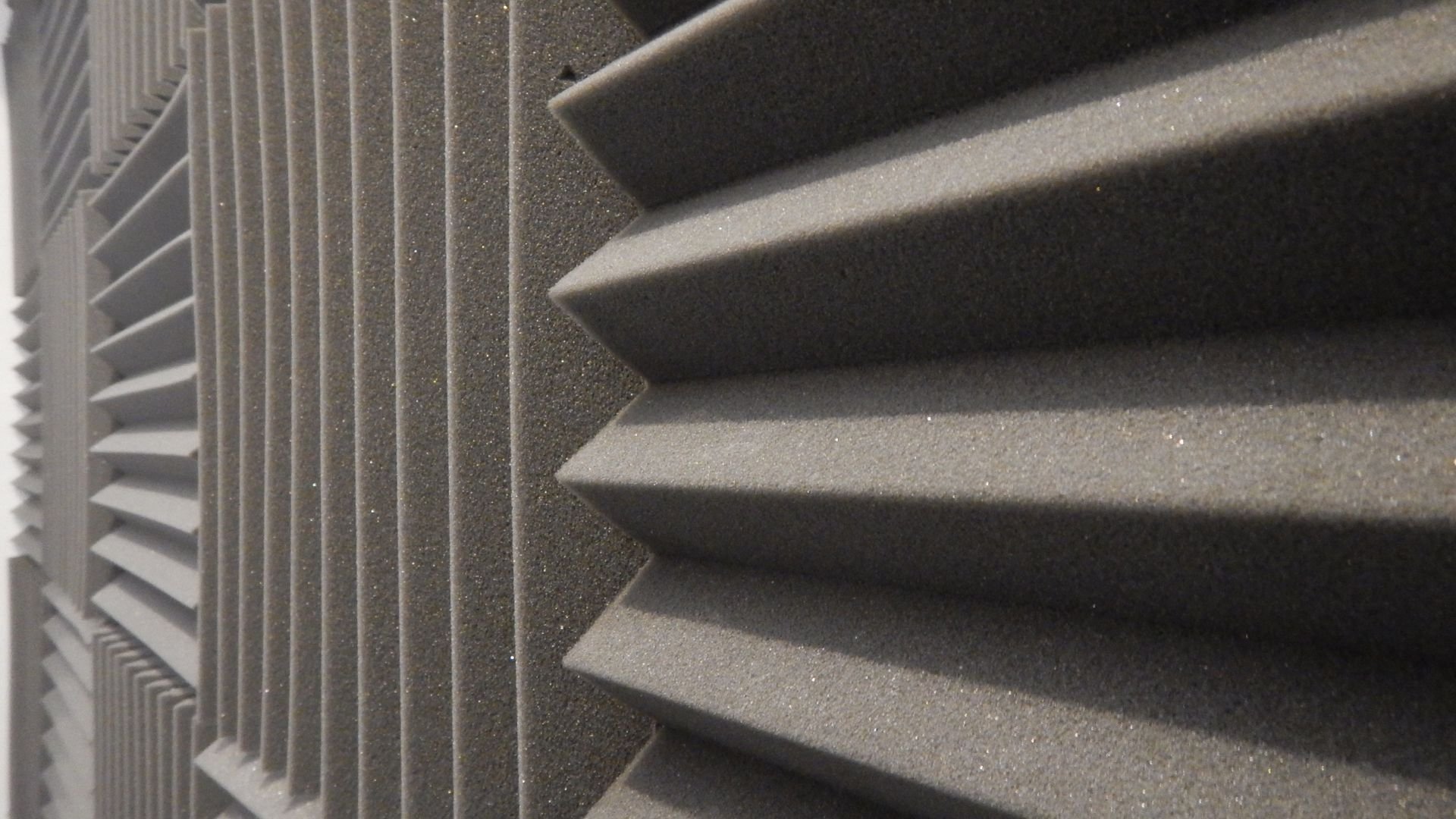
Podcasting and Audio Equipment
Here are the podcast equipment in my must-have list, they have different price ranges to choose from.
Computer
A reliable computer is the backbone of your podcast studio. Choose a computer with sufficient processing power and storage capacity to handle audio editing tasks.
Digital Audio Workstation (DAW)
A DAW is editing software used for recording, editing, and mixing audio. Popular options for podcasting:
- Descript- My recommendation
- Audacity (free)
- Adobe Audition
- GarageBand (for Mac users)
Audio Interface
An audio interface allows you to connect your microphones and other audio equipment to your computer.
- USB Audio Interface: USB interfaces are the most popular choice for podcasters and home studio setups. They connect to your PC via a USB cable and provide a straightforward plug-and-play experience.
- Thunderbolt Audio Interface: With high-speed data transfer capabilities, it is suitable for professional recording studios and users who require low-latency performance.
Microphone
When it comes to microphones for podcasting, there are a few options to consider. The choice of microphone depends on your budget, and recording environment…
- USB microphones are convenient for beginners as they connect directly to your computer. Popular USB microphone options include the Blue Yeti, Audio-Technica ATR2100x-USB, or Samson Q2U.
- XLR microphone requires an audio interface or mixer to connect to your computer. Popular XLR microphones include the Shure SM58 or Audio-Technica AT2020.
Headphones
Do you know why do podcasters wear headphones? Because a good pair of headphones helps improve the whole recording and editing process. Invest in a pair of closed-back headphones designed for audio monitoring. This allows you to listen to your recordings and make precise edits.
- In-Ear Monitors (IEMs)
- Over-Ear Headphones
Mic Stand and Pop Filter, Mixer
A sturdy mic stand will securely hold your microphone in place, while a pop filter helps reduce plosive sounds (like “p” and “b” sounds) during recording.
A mixer allows you to control audio levels, add effects, and connect multiple microphones or audio sources. It provides more flexibility and control over your audio, but it’s not necessary for all podcast setups.
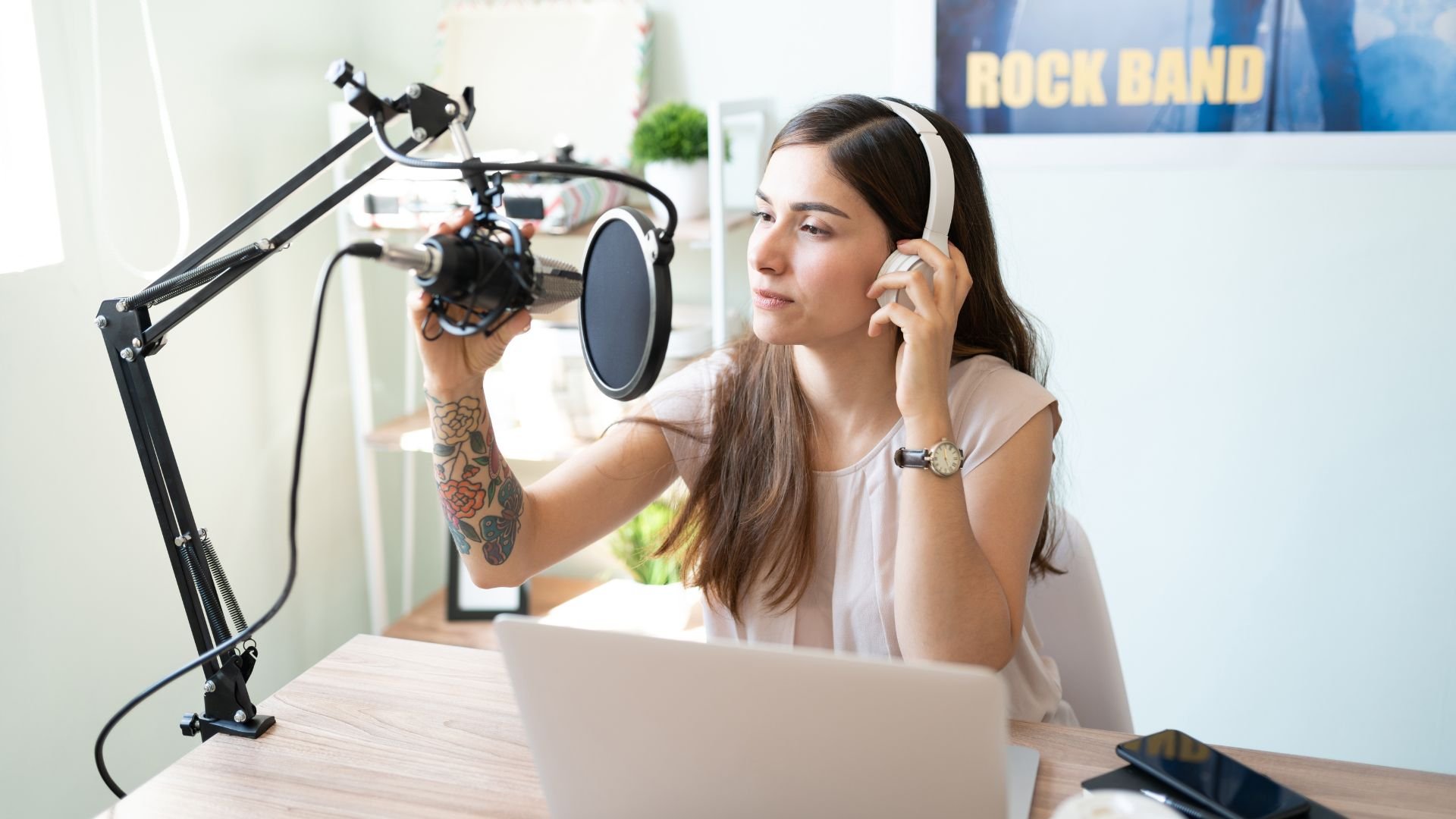
Podcast Studio Setup
Start with the desk: Choose a sturdy desk or table that provides enough surface area to accommodate all your equipment. Position it in a corner or against a wall to maximize space and create a focused work area.
Arrange all the equipment: Place your PC or laptop on the desk as the central hub of your podcasting setup. Position your audio interface within easy reach, connecting it to your computer via USB or other appropriate cables. Set up your microphone on a stand or boom arm, ensuring it’s at a comfortable height and angle for recording.
When talking about podcast setup ideas, it’s essential to consider the visual aspects that reflect your brand identity and the theme of your podcast show:
- Customize your recording space: Incorporate your brand colors, logo, or artwork into your podcast studio.
- Set up proper lighting: Good lighting enhances the visual quality of your video podcasts and creates a professional look.
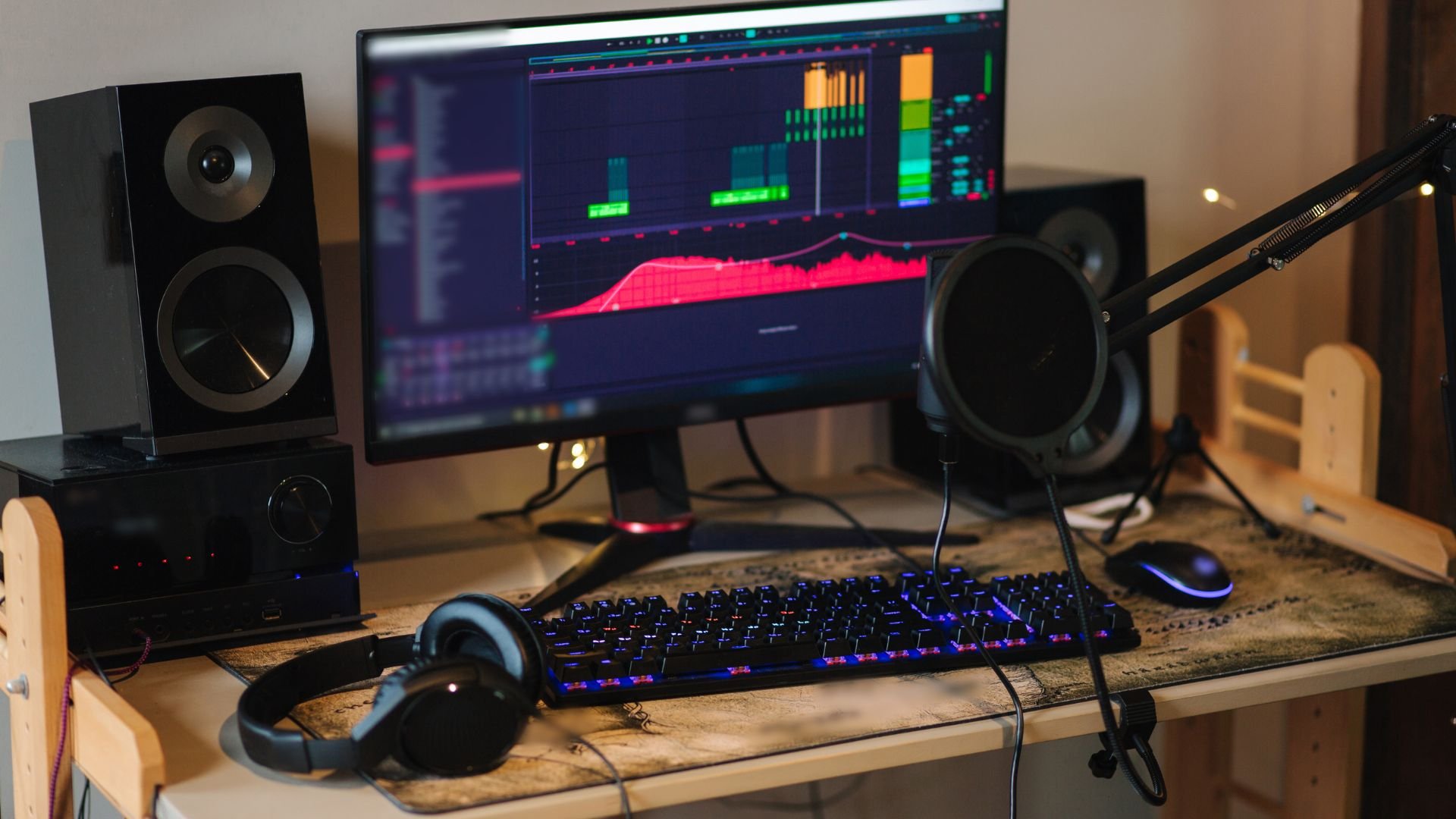
Test and Adjust
Before deciding to “hit record” for your podcast episode, remember to test and adjust your podcasting space.
Sound levels: Use your audio interface or mixer to set appropriate input levels for your microphone. Test different input gain settings while speaking at your normal recording volume to find the optimal level that captures your voice accurately.
Monitor your recording: Wear your headphones and actively monitor your recordings while speaking. Listen for any background noise, echoes, or other audio issues.
Test different recording scenarios: Record short samples in different scenarios, such as speaking directly into the mic, moving slightly off-axis, or speaking from different angles.
Listen and make adjustments: After each test recording, spend time listening back critically and analyzing the sound quality. Pay attention, take note, and make the necessary adjustments to your mic placement, settings, or environment to address these issues.
By following these steps and setting up your home podcast studio with care and attention to detail, you’ll be well on your way to creating a dream podcasting space right in the comfort of your own house. With a professional setup and optimal sound quality, you’ll have the tools you need to produce engaging and high-quality podcast episodes.
Some Tools To Help
Room Acoustics Tools: Websites like GIK Acoustics (www.gikacoustics.com) and Acoustic Fields (www.acousticfields.com) provide valuable resources for understanding room acoustics and offer tools to help you calculate and optimize your studio’s acoustic treatment.
Studio Design Software: Software programs like SketchUp (www.sketchup.com) or RoomSketcher (www.roomsketcher.com) can help you visualize and plan the layout of your studio. These tools allow you to create a digital representation of your space, experiment with different furniture and equipment arrangements, and ensure that everything fits harmoniously.
Podcast Hosting Platforms: Platforms like Libsyn (www.libsyn.com), Buzzsprout (www.buzzsprout.com), and Podbean (www.podbean.com) provide hosting services for your podcast episodes. They offer easy-to-use interfaces, distribution to major podcast directories, and analytics to track your podcast’s performance.
Graphic Design Tools: Websites such as Canva (www.canva.com) and Adobe Spark (www.adobe.com/spark) allow you to create eye-catching podcast cover art, episode thumbnails, and promotional graphics. These tools offer customizable templates, fonts, and graphics to help you showcase your brand identity and attract listeners.
Remember, while these tools and websites can be helpful, it’s essential to research and choose the ones that align with your specific needs and budget.
Additionally, seek guidance from experienced podcasters, join at least one online community or podcast network, and leverage resources like YouTube tutorials and podcasting forums to gather insights and best practices for designing and setting up your podcast studio.
A Wrap-up
Setting up your own home podcast studio is an exciting journey that allows you to share your voice, stories, and ideas with the world. By following the steps outlined in this guide, you can create a professional and comfortable space right in your own home.
Remember, it’s not just about the technical aspects. Infuse your studio with your unique brand identity, whether it’s through templates, colors, or decorations, to make it truly yours. Personalization adds a touch of magic and sets the stage for an engaging podcasting experience.
And just like that, you’ve transformed your cozy corner into the right podcasting space. Now, get ready to unleash your creativity, share your passion, and connect with your audience like never before.

